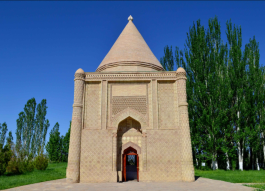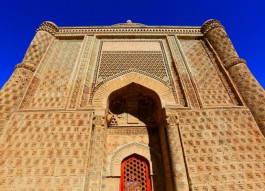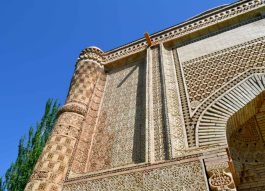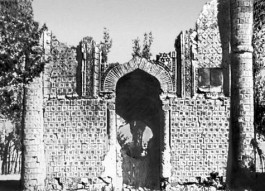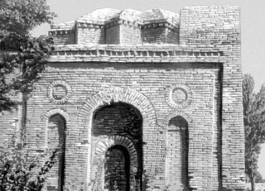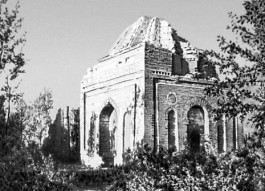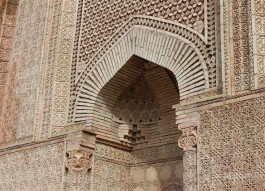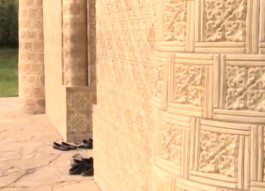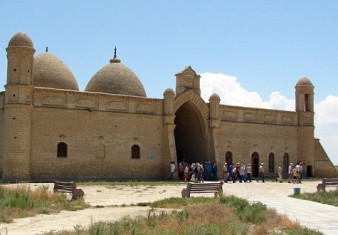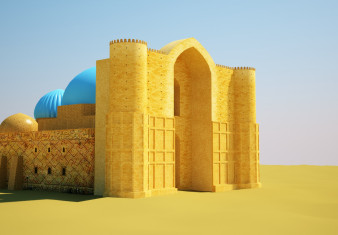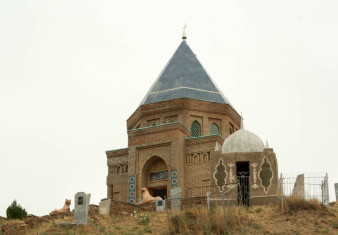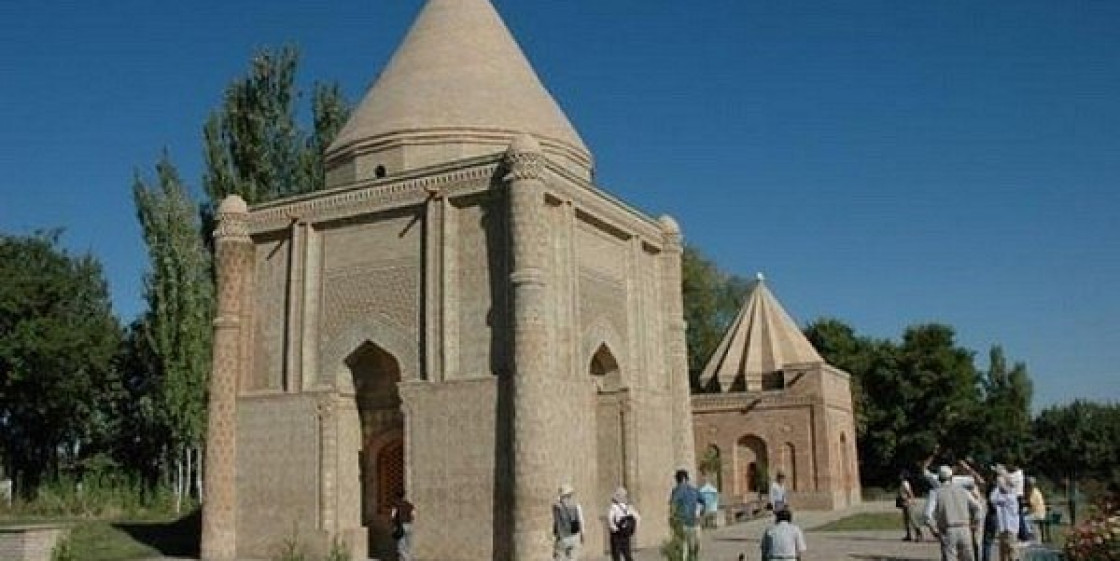
 Holy places
Holy places
42.8332, 71.2137
The Aisha-Bibi is in the west of Taraz, Kazakhstan on the Silk Road. It is locally famous as a monument to love and faithfulness.
Design
According to legend, the mausoleum was built by a Karakhanid Dynasty ruler for his beautiful fiancée Aisha-Bibi, a daughter of Sufi poet Khakim-Ata. Matching the legend, the mausoleum looks light, well-proportioned, and delicate. The mausoleum's architectural forms and decoration are reminiscent of fine lace. The whole building is covered with carved terracotta tiles using 60 different floral geometric patterns and stylized calligraphy. Aisha Bibi is a direct stylistic descendant of Samanid Mausoleum in Bukhara.
Site
Aisha Bibi is part of a larger complex. Ten meters away is a second mausoleum called Babaji Khatun ("wise queen"), and across the road is a sacred limestone cavern. Together with a garden area and parking lot, they form the national monument. The complex is sited on a ridge overlooking the Taraz oasis from the west.
Typology
The entire mausoleum is covered with terracotta panels which help to create the illusion of masslessness typical in Islamic architecture. The terracotta decoration also uses light and shadow rather than color, a pre-Mongol style. Functionally, this type of decoration scatters the light so the viewer is not blinded as he might be from a smooth light colored wall in full sun.
The Columns on the corner are shaped after wooden columns used extensively in Soghdian pre-Islamic architecture. There is a band of calligraphy at the point of constriction in each column. In general, they describe the beauty of Aisha Bibi and of love in general. One of the old distichs reads "Autumn... Clouds... The Earth is beautiful".
Arystan Bab Mausoleum is a mausoleum in Kazakhstan close to the village of Kogam and Otrartobe.
The religious structure continues to draw pilgrims from across Central Asia and has come to epitomize the Kazakh national identity.
Baydibek Karashauly (dates of birth and death are unknown) lived in the 11-12th centuries in the neighborhood of East Karatau, died in present Algabas district, near Aktas stud and buried on the river bank of Balabogen. The tomb established still in the ancient time with a dome remained.
Domalak Ana Mausoleum is a unique architectural monument of the South Kazakhstan.
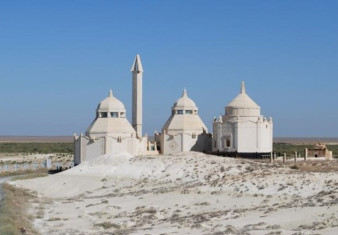
Beket-Ata Underground mosque is located in the Oglandy countryside, Mangystau region. This religious monument of architecture dates back to the XVIII century. Beket-Ata is considered as a holy place, in importance as a burial of Khozha Ahmed Yassaui. During two centuries, pilgrims come here for bowing the Holy Spirit.
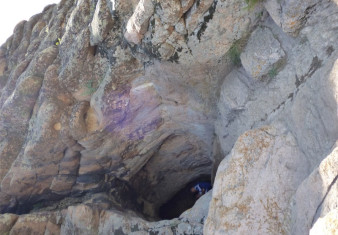
Everything that is known of this cave, is similar both on true and false at the same time. Local people say that there are three caves called Konyr-Auliye ("auliye" – sacred, the Saint) in Kazakhstan.














